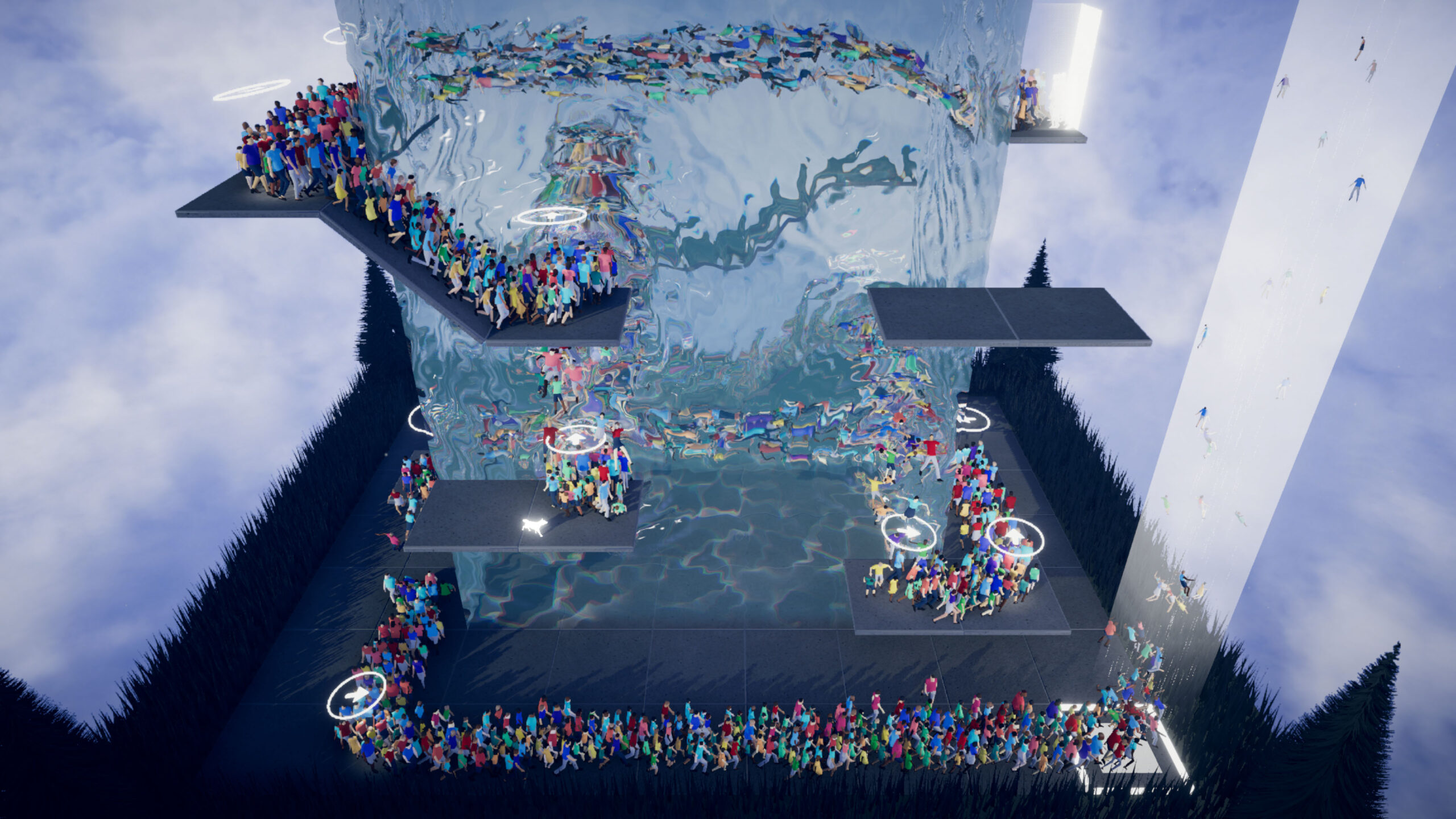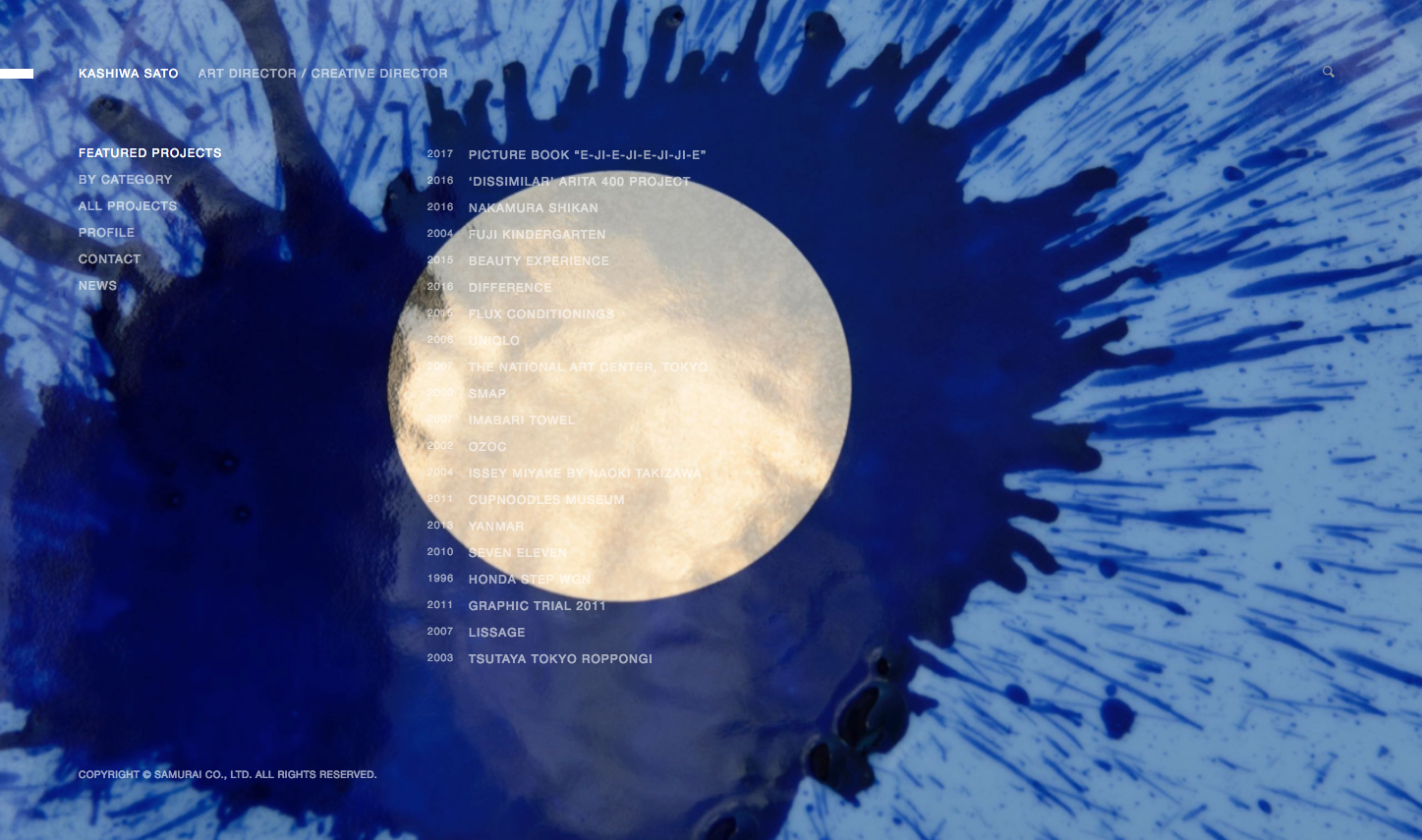Japanese Games and Artfaggotry
Posted: Fri Sep 08, 2023 10:34 am
Don't you love Humanity? For me, it's this year's best game - even if, admittedly, it's the only game I played released this year.
You control a Shiba Inu who has to lead a group of humans to a pillar of light by issuing different orders (change directions, jump, fight,...) so they can overcome a great number of challenges - from traversing labyrinths to winning battles against competing groups of humans. Saying it's a puzzle game is very reductive, for you can be asked to do dozens of different things with the ever expanding number of orders, threats, environments, situations... on top of controlling the dog himself, who isn't merely a replacement for the cursor - you need to "physically" move to different places, swiftly maneuver through the environment, and more than once, you'll have to rely on the people you are leading to be able to reach a certain place.
The game is always changed and there's not a single redundant puzzle. And yet, whatever the level may be, the result of finally "solving it" always turns out beautiful.


Humanity's development has been mostly carried by tha LTD., led by Yugo Namakura. While this company has been active and well-recognized for more than two decades, this has been the first videogame they've ever made. tha LTD. is not a videogame company, but a graphic design company.
Before making their videogame, tha LTD. had been working on projects ranging from instalations,
to video,
to software applications,
to motion signage,
to websites.

You can find a list of his works in their website. Yugo Nakamura has also done a lot of work on tha LTD., and in interviews he shows his interest on a near infinite number of topics: from math to birds. It was precisely while entertaining himself by using Boids, a software simulating the behavior of flocks, that he got the temptation of making his own videogame,
For years, tha LTD. had been experimenting with the pleasantness that could be found in watching a crowd move into spontaneous order,
and they even used footage taken from the game for some of his videos years prior to its release,
Which is one of the things that fascinates me the most with this game, and the "general" reason I wanted to create this thread: the relationship between modern art and videogames that, while not exclusive to Japan, seems to be most alive there. It's not simply the ocasional anecdote of an artist collaborating with a studio, or some museum project fueled by poorly spent public funding, but rather this strong pipeline between art and videogames that I wanted to illustrate through Humanity. I wanted to make this thread as an exploration of the results of this pipeline.
You control a Shiba Inu who has to lead a group of humans to a pillar of light by issuing different orders (change directions, jump, fight,...) so they can overcome a great number of challenges - from traversing labyrinths to winning battles against competing groups of humans. Saying it's a puzzle game is very reductive, for you can be asked to do dozens of different things with the ever expanding number of orders, threats, environments, situations... on top of controlling the dog himself, who isn't merely a replacement for the cursor - you need to "physically" move to different places, swiftly maneuver through the environment, and more than once, you'll have to rely on the people you are leading to be able to reach a certain place.
The game is always changed and there's not a single redundant puzzle. And yet, whatever the level may be, the result of finally "solving it" always turns out beautiful.


Humanity's development has been mostly carried by tha LTD., led by Yugo Namakura. While this company has been active and well-recognized for more than two decades, this has been the first videogame they've ever made. tha LTD. is not a videogame company, but a graphic design company.
Before making their videogame, tha LTD. had been working on projects ranging from instalations,
to video,
to software applications,
to motion signage,
to websites.

You can find a list of his works in their website. Yugo Nakamura has also done a lot of work on tha LTD., and in interviews he shows his interest on a near infinite number of topics: from math to birds. It was precisely while entertaining himself by using Boids, a software simulating the behavior of flocks, that he got the temptation of making his own videogame,
He worked on a small prototype for a "bird game" inspired on this, until he got the next idea: to make it so the birds are people.I think a lot of people like me have used a simulation program called “Boids,” which essentially simulates the flocking behavior of birds. If you focus on just a single creature, you’re able to create very organic movements just by programming three simple rules and connecting them. But in the case of birds, the simulation looked so alive, and it was fascinating to see how organically the flock of birds moved, even though it was based on such a simple mechanism.
With this idea of a game about wanting to see crowds of humans as large as possible move in a satisfying way, he began working on a demo as a side project. Once released, it got the attention of Tetsuya Mizuguchi, the producer of Tetris Effect and director of Enhance, who said,My first eureka moment was when I saw huge crowds of people at Comic Market (Comiket) in Japan, all properly lined up and waiting patiently. I was fascinated by how the movement of that many people was so controlled and regulated – I think this sort of behavior is unique to humans who are not just herded by instinct.
And so, Yugo Nakamura and tha LTD. had the opportunity to work for five years in total in the development of Humanity. It's a very pretty game: as you solve the problem, the directionless, chaotic crowd of people begins to take shape, until covering the entire map filling it with color and movement. This is what separates Humanity from any other game for me - it's a small and white world becoming alive and joyful.I felt like if I give this person the tools and resources to make a game, he already has the core sensibilities to do that. I saw in his mannerism and eyes that he was not going to give up on this opportunity.
For years, tha LTD. had been experimenting with the pleasantness that could be found in watching a crowd move into spontaneous order,
and they even used footage taken from the game for some of his videos years prior to its release,
Which is one of the things that fascinates me the most with this game, and the "general" reason I wanted to create this thread: the relationship between modern art and videogames that, while not exclusive to Japan, seems to be most alive there. It's not simply the ocasional anecdote of an artist collaborating with a studio, or some museum project fueled by poorly spent public funding, but rather this strong pipeline between art and videogames that I wanted to illustrate through Humanity. I wanted to make this thread as an exploration of the results of this pipeline.